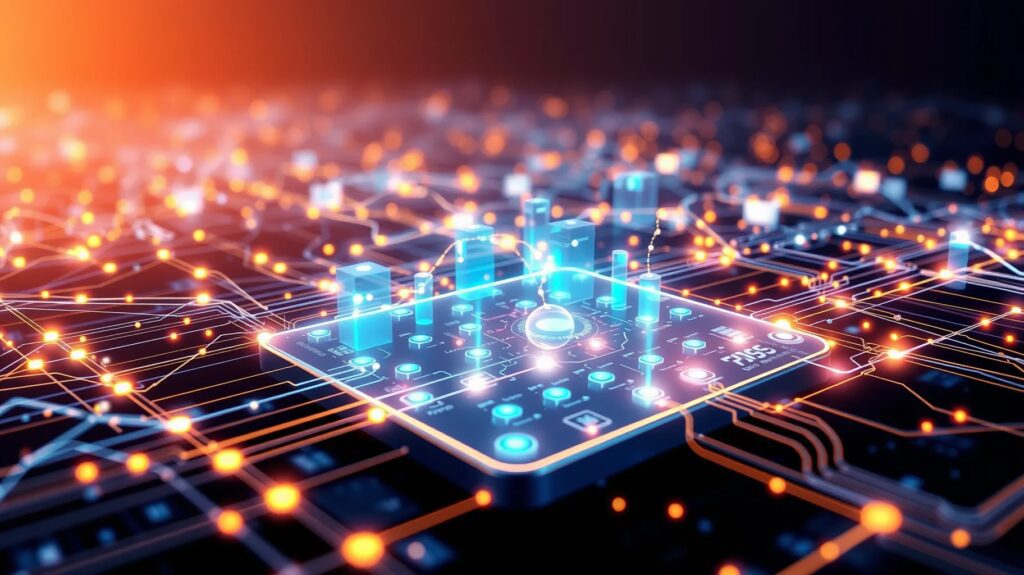
Introduction: A Smarter, Leaner Future for Edge Computing and IoT
With edge computing and Internet of Things (IoT) taking the tech world by storm, there’s a rising demand for efficient machine learning algorithms.
Yet, these algorithms must perform well on low-power devices. Proximal Policy Optimization (PPO), a popular reinforcement learning (RL) method, is a game-changer—but can it be streamlined to suit resource-limited environments?
In this article, we’ll take a deep dive into how PPO is adapted for low-power IoT devices and edge computing. By combining smart, energy-conscious algorithms with powerful RL models, a new wave of intelligent, energy-efficient systems is emerging.
Let’s explore how.
Why Low-Power Devices Need Efficient PPO
In the world of IoT and edge computing, resource efficiency is paramount. Devices deployed in the field often have limited processing power and energy constraints, making traditional PPO approaches difficult to apply.
- Limited Battery Life: IoT devices often rely on batteries, requiring ultra-low-power solutions.
- Processing Power Constraints: Edge devices can’t always run heavy computations like cloud servers do.
- Network Connectivity: With edge computing, stable connections are not always guaranteed, which affects data transmission and real-time processing.
Given these limitations, optimizing PPO algorithms for edge devices is crucial. A slimmed-down version of PPO can maintain effectiveness while reducing resource consumption.
The Rise of Reinforcement Learning in IoT
With IoT expanding into smart homes, healthcare, and industrial automation, there’s a growing need for adaptive systems. Reinforcement learning (RL) offers the adaptability required to enhance decision-making in IoT systems.
How RL Fits In:
- Dynamic Environments: IoT devices must adapt to changing environments, like fluctuating temperatures or shifting user behaviors. RL allows them to learn and evolve.
- Energy Optimization: RL models can optimize power consumption by learning the most energy-efficient patterns of behavior.
- Latency Reduction: Instead of sending data back to the cloud, edge computing uses RL to process decisions locally, cutting down on latency.
Despite these benefits, traditional RL models like PPO require optimization to suit low-energy devices in real-time.

What Is Proximal Policy Optimization (PPO)?
Let’s break it down.
PPO is an on-policy RL algorithm used to improve the stability and performance of deep reinforcement learning models. It does this by controlling how much the policy can change at each step, ensuring that updates remain within a safe and stable range. In essence, PPO strikes a balance between exploration (trying new actions) and exploitation (refining known actions) efficiently.
Why is this important?
- Stability: PPO improves the stability of policy learning, making it more reliable for sensitive edge applications.
- Simplicity: Unlike more complex algorithms, PPO is relatively simple, which suits low-power systems.
However, despite its simplicity, standard PPO algorithms may still be too computationally expensive for edge devices and IoT systems.
Challenges of Applying PPO in Low-Power Edge Systems
Though PPO has advantages, deploying it on edge computing systems brings unique challenges. Low-power IoT devices, such as sensors or embedded systems, often lack the computational muscle needed for intensive RL models.
Some key challenges include:
- Computation Overhead: PPO requires a significant number of iterations to learn, consuming power and memory.
- Real-Time Learning: IoT devices need instant decisions, but standard PPO takes time to process.
- Energy Usage: Running PPO frequently drains battery life, which isn’t feasible for devices meant to last years on minimal energy.
So, how can we adapt PPO to meet these needs? We must take a more resource-conscious approach.
Optimizing PPO for Edge Devices: The Key Approaches
There are several strategies to adapt PPO for low-power devices without sacrificing too much performance. By tweaking the algorithm and rethinking how it operates, we can make it a better fit for IoT applications.
- Model Compression: Using techniques like quantization or pruning, we can reduce the size of the neural networks used in PPO. This makes computations faster and less power-hungry.
- Asynchronous Learning: Edge devices can take advantage of asynchronous learning by offloading some learning processes to more powerful nearby nodes or servers, returning results without needing to process everything locally.
- Sparse Reward Systems: By designing more efficient reward systems, devices can spend less time learning and more time applying the learned behaviors.
These methods help to ensure PPO’s adaptability, even on resource-limited devices.
Balancing Performance with Energy Efficiency
The balance between performance and energy consumption is crucial for PPO on edge devices. Developers must carefully evaluate trade-offs.
Some practical methods include:
- Adaptive Sampling: Instead of continuously running, devices can sample data selectively, reducing the workload and power usage.
- Lightweight Neural Networks: Using simplified neural architectures reduces computational complexity, making RL feasible on low-end hardware.

Real-World Applications of PPO on IoT Devices
Now, let’s see how these concepts play out in the real world. Smart cities and healthcare systems are prime areas where efficient PPO could shine.
- Smart Traffic Systems: Adaptive PPO could help IoT sensors in traffic lights adjust timing dynamically to improve traffic flow, all while conserving energy.
- Wearable Devices: Fitness trackers or medical devices could use low-power PPO to continuously adjust recommendations based on user behavior, with minimal battery drain.
By deploying PPO on such systems, IoT devices gain intelligence, improving outcomes without draining their resources.
Future Trends: RL Meets Energy Harvesting IoT
Looking ahead, the combination of reinforcement learning and energy-harvesting IoT devices presents an exciting future. These devices could harness solar power or thermal energy, continually learning from their environment while reducing the need for traditional batteries.
Efficient PPO will be a key player here, as it will need to work alongside energy-harvesting technologies to create systems that learn, adapt, and thrive—all without significant human intervention.
Conclusion: A World of Smarter Devices, Powered by Efficient PPO
The fusion of edge computing, IoT, and reinforcement learning promises to unlock a future where devices are smarter, faster, and more energy-efficient. PPO is just one piece of the puzzle, but it’s an important one—especially when adapted for low-power environments.
With innovations in model compression, asynchronous learning, and adaptive sampling, we’re on the verge of creating systems that thrive even in the most resource-constrained settings.
By leveraging the right strategies, PPO on low-power devices could transform the IoT landscape, bringing real-time intelligence to systems all around us. It’s a leap into a smarter, greener future.
FAQs: Efficient PPO for Low-Power Devices in Edge Computing and IoT
2. Why is PPO important for IoT and Edge Computing?
PPO is a powerful algorithm for real-time decision making, which is critical for edge computing and IoT systems. These systems require fast, adaptive responses to changing environments, like adjusting energy usage or processing data locally to reduce latency. PPO provides a framework for learning these patterns efficiently, allowing devices to improve over time without human intervention.
3. What challenges exist when using PPO on low-power devices?
The primary challenges are:
- Limited computational power: Edge devices often lack the hardware needed to run large-scale machine learning models.
- Battery life: Many IoT devices operate on batteries, making energy efficiency crucial.
- Memory and storage limitations: Edge devices have constrained memory, making it hard to store large models or handle extensive data processing.
4. How can PPO be optimized for low-power devices?
There are several strategies:
- Model compression: Techniques like quantization reduce the size of the models, making them easier to run on limited hardware.
- Asynchronous learning: Offloading some of the computation to nearby, more powerful nodes while only handling essential tasks locally.
- Energy-efficient algorithms: Designing reward systems that allow the RL agent to learn more efficiently, saving both time and energy.
5. What are some real-world applications of PPO in IoT?
- Smart traffic systems: Using PPO to optimize traffic light timing for smooth vehicle flow in cities while minimizing power usage.
- Smart homes: Energy management in smart homes can be improved by having IoT devices learn user preferences and adjust lighting or heating accordingly.
- Wearable healthcare: Fitness or medical trackers can use PPO to learn user habits, providing personalized feedback while conserving battery.
6. Is PPO the only RL algorithm suitable for IoT and Edge Computing?
No, PPO is one of many RL algorithms, but it is popular because of its balance between performance and stability. However, other lightweight RL algorithms, like Deep Q-Networks (DQN) or A3C (Asynchronous Advantage Actor-Critic), can also be adapted for low-power edge devices depending on the application.
7. Can PPO be combined with other technologies to enhance efficiency?
Yes! Combining PPO with technologies like model pruning, energy harvesting, and edge AI helps to improve energy efficiency. For instance, integrating energy-harvesting techniques allows IoT devices to power themselves through renewable sources while running lightweight PPO models.
8. How does model compression impact the performance of PPO on edge devices?
Model compression (such as quantization or pruning) reduces the size of the neural network, making it easier to run on low-power devices. While this can slightly reduce performance in terms of precision, it allows devices to execute the algorithm with much lower energy consumption. The trade-off between performance and energy efficiency depends on the specific use case.
9. Are there any open-source tools for running PPO on IoT devices?
Yes, several frameworks can help deploy RL models like PPO on edge devices:
- TensorFlow Lite: Optimized for mobile and IoT devices, allowing developers to run machine learning models on resource-constrained devices.
- PyTorch Mobile: A lightweight version of PyTorch for mobile and edge environments.
- OpenAI Baselines: A popular set of RL implementations including PPO that can be adapted for specific hardware.
10. How can asynchronous learning benefit PPO on edge devices?
Asynchronous learning allows edge devices to offload computationally heavy tasks to nearby servers or more powerful nodes, handling only lightweight tasks locally. This reduces the load on the low-power device, improves real-time decision-making, and prolongs battery life. By operating asynchronously, the device doesn’t have to wait for every task to complete before continuing.
11. What future trends should we expect in RL for low-power IoT devices?
Future trends include:
- Energy harvesting: IoT devices that gather energy from their environment, allowing them to run RL algorithms like PPO without relying solely on batteries.
- Edge AI development: More powerful and efficient edge AI chips are being developed to handle RL algorithms directly on-device.
- Hybrid cloud-edge architectures: A combination of cloud computing for heavy processing and edge devices for real-time decision-making will likely become more prevalent.
12. How do energy constraints impact RL models in IoT?
Energy constraints limit how often models can be trained and executed on IoT devices. RL models like PPO, which can be computationally expensive, must be adapted to ensure they don’t deplete device batteries too quickly. This can mean using lightweight models, reducing the number of updates, or incorporating energy-efficient optimization techniques.
13. Is latency a concern when running PPO on edge devices?
Yes, latency is always a concern in edge computing. While PPO allows devices to make decisions locally (reducing the need to send data to the cloud), the time it takes to compute these decisions still needs to be minimized. Optimized PPO for edge environments should be able to process information quickly enough for real-time applications.
14. How do edge and cloud computing differ in terms of running RL models like PPO?
Cloud computing offers nearly unlimited resources, allowing for complex, large-scale training of RL models like PPO. Edge computing, on the other hand, operates on devices with limited resources, requiring lightweight models that can run efficiently on hardware with constraints on power, memory, and processing power. While cloud-based RL models may offer greater precision, edge-based models prioritize speed and local decision-making.
Resources
- Proximal Policy Optimization (PPO) Algorithm
To understand the fundamentals of PPO and how it works, OpenAI’s research blog offers a thorough explanation: - Reinforcement Learning for Edge Computing and IoT
Learn how reinforcement learning is applied to IoT and edge computing systems to optimize decision-making, resource management, and energy efficiency: - Energy-Efficient Algorithms for Edge AI
This paper outlines the key approaches to making AI algorithms more energy-efficient, especially for deployment in edge environments:





